#ceramides
Text
ILLIYOON Ceramide Ato Concentrate Cream Review
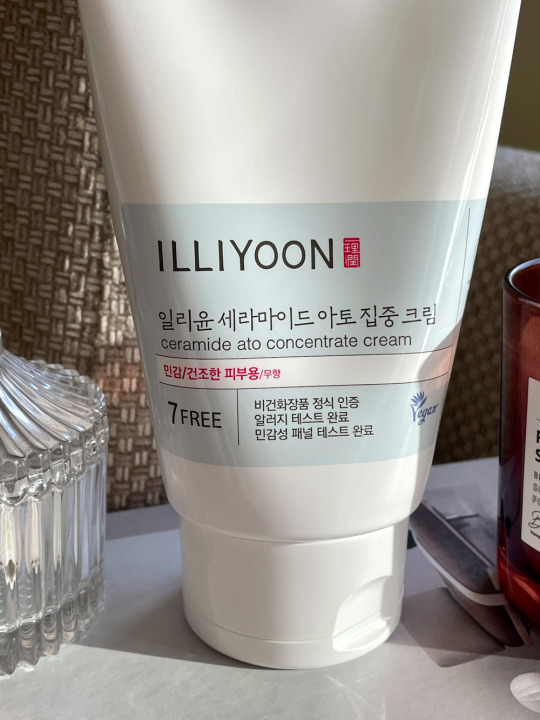
I'm sure you've heard of the Illiyoon Ceramide Ato Concentrate Cream, a popular Korean moisturizer. However, like with most skincare products, it’s not a one-size-fits-all solution. So, let’s delve deeper and explore which skin types and conditions are best suited to reap its benefits.
Read the full blog post here: ILLIYOON Ceramide Ato Concentrate Cream Review
Have you tried this before?
#kbeauty#korean skincare#kbeauty reviews#korean cosmetics#kbeauty blog#kbeautylover#skincare#skincare tips#dry skin#sensitive skin#face cream#illiyoon#Ceramide Ato Concentrate Cream#ceramide cream#ceramides#dry skincare#skincare routine#moisturizer#flaky skin#eczema#rosacea#fragrance free#cruelty free beauty
56 notes
·
View notes
Text

Ceramide Moisturizer for Dry Skin
#ceramides#moisturizer#skincareproducts#skincare tips#skincare essentials#skincare#skincare routine#face#dry skin
2 notes
·
View notes
Photo

dr. jart+ ceramidin hand cream.
found this when searching for a good and non slippery and non sticky hand cream, it was recommended by quite a lot of people on social media and i do like the cicapair calming gel cream from the same brand that i have tried before. bought this online with ease as there’s an official store on major shopping sites.
the 50ml packaging is quite big, and last a long time, i am still using it until now. the cream does not have any notable scent, is light weight and easy to spread, and there’s no sticky or slippery feeling after application. i only needed quite a small dollop for both hands, little does go a long way.
the moisturizing effect is quite good, if applied to a dry patch continuously for a few days, the dry patch would be gone. skin feels really nice for a long time after application, and i do like that it is not easily transferred to other surface.
happy to have found the product, would probably get a smaller version for travel and repurchase when i finish the current one as it is reasonably priced and can be bought easily online.
#beauty#skincare#hand care#dr jart+#ceramidin#hand cream#ceramides#healing#not scented#no scent#no fragrance#non sticky#not oily#not slippery#packaging#big#little goes a long way#easy to use#light weight#spreadable#reasonable price#shop online#easy access#official store#love this#highly recommended#review#simple#effective#dry patches
4 notes
·
View notes
Text
Winter Essentials (Revised)
Aveeno Skin Relief Body wash - This is fantastic. I can't believe I didn't buy this before.
Aveeno Dermexa cream - helping me with dry, itchy skin. This has ceramides and colloidal oatmeal.
Sebamed sensitive skin soap - I use this on face.
Bioderma Sensibio Gentle Soothing Micellar Cleansing Foaming Gel - I got this sample face wash that I've been using on for a week. It's really nice. But I find it a bit expensive. So I won't buy full pack.
Bioderma Sensibio H2O Daily Soothing Cleanser - I got two bottles of this. I use it to remove make-up. Sometimes I use this in the morning as well.
The Ordinary Glycolic Acid 7% Toning Solution - I use this 2-3 times a week.
0.05 Tret cream - still trying to get into a working routine with this. I haven't figured out.
#skincare#skin care#body care#acne#winter care#winter#fall#Aveeno#Bioderma#Sebamed#colloidal oatmeal#ceramides#sensitive skin#dry skin
10 notes
·
View notes
Text

Dual Pop
Eye Patches 👀
I’ve always been a fan and user of under eye patches. Wanted to try something different from the usual ‘gold’ patches. Found these (available on my Amazon store) and they are soothing. Packaging is too cute. The dual colors represent the dual ingredients: ceramides (provides intense hydration) and centella asiatica (medicinal herb that enhances collagen).




6 notes
·
View notes
Video
Clean skin is all about sending oil down the drain without taking moisture along for the ride.
4 notes
·
View notes
Text
Garnier Superfood Body Butter Review
Garnier Superfood Body Butter with Cocoa Butter and Ceramides.
This butter has been on sale for a long time, I just bought it now. Yes, I’m a little late. But I bought it at a wonderful affordable price, so I’m not sorry for waiting.
This line has a couple of versions of the butter, so it was really hard for me to decide which one I would get. You can choose between watermelon and hyaluronic…

View On WordPress
0 notes
Text
Comparison: BioLean vs. Ikaria Lean Belly Juice 2024

Comparison: BioLean vs. Ikaria Lean Belly Juice 2024
Introduction:
In the realm of weight management solutions, BioLean and Ikaria Lean Belly Juice stand out as two promising contenders. Both products claim to offer effective support for healthy weight loss, but how do they stack up against each other? In this comprehensive comparison, we'll delve into the features, benefits, and user experiences of BioLean and Ikaria Lean Belly Juice to help you make an informed decision.
What is BioLean and Ikaria Lean Belly Juice?
BioLean and Ikaria Lean Belly Juice are both natural weight loss supplements formulated to support healthy weight management. While BioLean targets obesogens and aims to provide a holistic approach to weight loss, Ikaria Lean Belly Juice focuses on accelerating metabolism, increasing energy levels, and supporting healthy digestion.
Who Created BioLean and Ikaria Lean Belly Juice?
BioLean is developed by a team of experts dedicated to providing safe and effective solutions for weight management. On the other hand, Ikaria Lean Belly Juice's creators emphasize its exotic blend of ancient nutrients designed to promote vitality and well-being.
Top Benefits of BioLean and Ikaria Lean Belly Juice:
BioLean:
Supports healthy weight loss
Boosts metabolism
Enhances digestive health
Supports immune system
Reduces inflammation
Ikaria Lean Belly Juice:
Accelerates metabolism
Increases energy and vitality
Supports healthy digestion
Promotes overall well-being
Best Features of BioLean and Ikaria Lean Belly Juice:
Both BioLean and Ikaria Lean Belly Juice boast unique features that set them apart in the realm of weight management supplements. BioLean's key features include its natural ingredients sourced from high-quality sources, science-backed formula, and affordability. On the other hand, Ikaria Lean Belly Juice stands out for its exotic blend of ancient nutrients and convenient integration into daily routines.
The Compounds that Make Up BioLean and Ikaria Lean Belly Juice:
BioLean:
Contains ingredients such as citrus aurantium extract, banaba, and green tea extract, which are believed to stimulate metabolism and reduce calorie intake.
Ikaria Lean Belly Juice:
Features a blend of ancient nutrients including Fucoxanthin, Panax Ginseng, Bioperine, Resveratrol, EGCG from green tea, Taraxacum, and Citrus Pectin, which work synergistically to support metabolism and digestion.
BioLean and Ikaria Lean Belly Juice Pricing:
Pricing:
BioLean:
Starter Pack (1 Bottle): $59/bottle
Customer Favorite Pack (6 Bottles + 3 FREE Bonuses): $39/bottle
Popular Pack (3 Bottles + 2 FREE Bonuses): $49/bottle
want more information from here or buy it from here
Ikaria Lean Belly Juice:
Basic (30 Day Supply): $69/bottle
Popular (90 Day Supply): $59/bottle
Best Value (180 Day Supply): $39/bottle
want to learn more or buy it from here
BioLean and Ikaria Lean Belly Juice Pros and Cons:
BioLean Pros:
Natural ingredients
Science-backed formula
Affordable pricing
Money-back guarantee
Ikaria Lean Belly Juice Pros:
Accelerates metabolism
Increases energy and vitality
Supports healthy digestion
BioLean and Ikaria Lean Belly Juice Alternatives:
Both BioLean and Ikaria Lean Belly Juice face competition from other weight management supplements on the market. However, their unique formulations and benefits make them stand out as top choices for individuals seeking effective weight loss solutions.
BioLean and Ikaria Lean Belly Juice Case Study or Personal Experience:
Personal Experiences with BioLean:
In my personal journey with BioLean, I found the comprehensive approach to weight loss immensely beneficial. The carefully curated blend of natural ingredients not only supported my weight loss goals but also enhanced my overall well-being. Unlike other supplements I've tried, BioLean provided a gentle yet effective solution, allowing me to notice gradual yet sustainable progress. With consistent use, I experienced a significant decrease in appetite, an increase in energy levels, and an overall improvement in my mood. BioLean's commitment to quality and safety, backed by a 60-day money-back guarantee, instilled confidence in my choice and ultimately led to positive outcomes in my weight loss journey.
Personal Experiences with Ikaria Lean Belly Juice:
Embarking on a journey with Ikaria Lean Belly Juice was a revelation in itself. The potent blend of exotic nutrients immediately appealed to me, promising to activate my metabolism and rejuvenate my energy levels. Within weeks of incorporating it into my daily routine, I noticed a remarkable difference in my vitality and stamina. Unlike other supplements that left me feeling jittery or fatigued, Ikaria Lean Belly Juice provided a sustainable energy boost that propelled me through my day. Its focus on targeting ceramides and supporting liver health resonated with my desire for a holistic approach to weight management. With bonuses and a 180-day money-back guarantee, Ikaria Lean Belly Juice proved to be a risk-free investment in my health and well-being.
Conclusion: Should You Buy BioLean or Ikaria Lean Belly Juice?
In conclusion, both BioLean and Ikaria Lean Belly Juice offer unique benefits for individuals seeking to achieve healthy weight loss. While BioLean excels in supporting overall well-being and providing a comprehensive solution, Ikaria Lean Belly Juice may appeal to those looking for a natural energy boost and metabolism support. Ultimately, the choice between BioLean and Ikaria Lean Belly Juice depends on individual preferences and goals. Whether you prioritize a gentle yet effective approach like BioLean or seek the revitalizing energy of Ikaria Lean Belly Juice, both products offer promising solutions for your weight loss journey.
Take the first step towards a healthier you by clicking on the link below to discover the benefits of BioLean (click here) or Ikaria Lean Belly Juice (click here) today.
read more:

#BioLean#IkariaLeanBellyJuice#WeightLossSupplements#NaturalSolution#ComprehensiveApproach#MetabolismSupport#EnergyBoost#Vitality#HolisticApproach#AppetiteSuppression#IncreasedEnergyLevels#ImprovedMood#OverallWellBeing#NaturalIngredients#ProprietaryFormula#HighQualityIngredients#MetabolismBoosters#AppetiteSuppressants#SustainableWeightLoss#CalorieExpenditure#CalorieIntakeReduction#SynergisticMechanism#Ceramides#LiverHealth#ExoticNutrients#AncientNutrients#FatBurningOrgan#MarineCarotenoid#PanaxGinseng#Bioperine
0 notes
Text
Hydrator vs. Moisturizer: Which is Better?
Ever wandered through the beauty aisle or scrolled endlessly online for skincare goodies? Chances are, you’ve stumbled upon terms like “hydrator” and “moisturizer.” What’s the deal with these two, and do they actually make a difference for your skin? Time to decode this skincare mystery!
Understanding the Basics: Hydrators vs. Moisturizers
To kick things off, let’s clarify what hydrators and…

View On WordPress
#acceptance#aloe vera#beauty#ceramides#glycerin#hyaluronic acid#hydration#lifestyle#millennial#moisturizer#oil#skin-care#skincare#wellness#women supporting women
0 notes
Text
0 notes
Text
Salicylic Acid vs Glycolic Acid
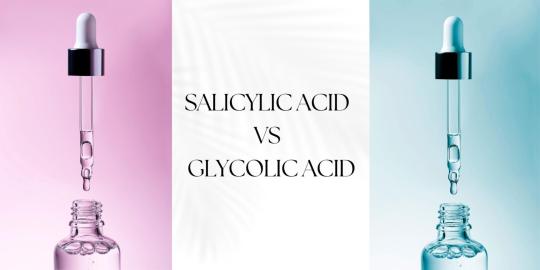
The Pros & Cons of Salicylic Acid vs Glycolic Acid for Your Skin in 2023
In the world of skincare, salicylic acid, and glycolic acid are two well-known powerhouses, often lauded for their distinct benefits and transformative effects. But, with so much information available, it can be challenging to determine which acid is the right fit for your unique skin type and concerns. Fret not! In this blog post, we’ll delve deep into the world of salicylic acid vs glycolic acid, exploring their unique properties, benefits, and potential drawbacks, as well as offering expert advice on how to choose and incorporate the right one for your skincare routine.
From treating acne to reducing signs of aging, salicylic acid and glycolic acid have a plethora of applications that cater to various skin types and concerns. Let’s start by understanding the basics of these acids, their benefits, and potential drawbacks to see which one might be the perfect fit for your skin in the context of salicylic acid vs glycolic acid.
Key Takeaways
- Salicylic acid is an effective Beta Hydroxy Acid (BHA) that can treat acne, manage oily skin and reduce redness.
- Glycolic acid helps to brighten & soften the complexion, reduce signs of aging and promote a youthful glow.
- Incorporating salicylic & glycolic acids into your skincare routine safely with expert guidance provides transformative results!
Understanding Salicylic Acid
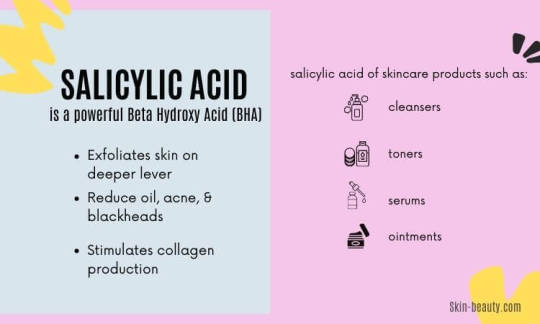
Salicylic acid is a powerful Beta Hydroxy Acid (BHA) derived from the bark of a willow tree, known for its ability to expertly exfoliate, dissolve oil, and battle bacteria in pores. As one of the most effective beta hydroxy acids, you can easily find salicylic acid in a variety of skin care products such as:
- cleansers
- toners
- serums
- ointments
This oil-soluble acid is especially beneficial for oily, combination, and acne-prone skin, helping to prevent acne breakouts.
Using salicylic acid once daily can yield optimal results in unclogging clogged pores and reducing excess sebum. One should be familiar with the unique benefits of glycolic and salicylic acid, and how they cater to different skin types and concerns.
Benefits of Salicylic Acid
Salicylic acid shines in the realm of acne treatment, oily skin management, and redness reduction. As a beta hydroxy acid, it works deep within the pores to reduce excess sebum production, the primary cause of acne. It's oil-dissolving and anti-inflammatory properties make it an excellent choice for those battling acne breakout and excess oil production.
While both glycolic acid and salicylic acid offer benefits for various skin concerns, salicylic acid is particularly effective in addressing acne, oily skin, and redness. Deciding between glycolic or salicylic acid requires careful consideration of your specific skin type and concerns for optimal results. In this context, understanding the differences in “glycolic acid vs salicylic” can help you make an informed decision.
Potential Drawbacks
Despite its benefits, salicylic acid may not be suitable for everyone. Potential drawbacks include dryness, irritation, and increased sensitivity to sunlight. This is due to salicylic acid’s ability to dissolve the skin’s natural oils, which can disrupt the skin barrier and cause dryness in some individuals.
For those with sensitive skin or dry skin, starting with a low concentration of salicylic acid and gradually increasing as your skin adjusts is advisable. Additionally, incorporating a moisturizer and sunscreen can help protect your sensitive skin and keep it looking its best.
Understanding Glycolic Acid

Glycolic acid, an Alpha Hydroxy Acid (AHA) derived from sugarcane, is celebrated for its ability to brighten and refresh the skin, encourage new cell growth, and reduce signs of aging such as uneven skin tone, texture, hyperpigmentation, and fine lines. This water-soluble acid works its magic by effectively dissolving and removing dead skin cells on the epidermis, resulting in a brighter and softer complexion. Among other alpha hydroxy acids, glycolic acid stands out for its exceptional benefits to the skin.
Due to its compact molecular shape, glycolic acid boasts superior product penetration, making it a popular choice for various skin concerns. Like salicylic acid, glycolic acid can be found in many skincare products, including:
- cleansers
- toners
- serums
- ointments
Benefits of Glycolic Acid
Glycolic acid is a versatile skincare ingredient, offering impressive benefits such as:
- improving skin texture
- reducing mild hyperpigmentation
- reducing enlarged pores
- reducing fine lines and wrinkles
Its exfoliating and brightening properties make it suitable for almost all skin types, addressing a wide range of skin concerns.
By gently removing the layer of dead skin cells and strengthening the skin’s natural defenses against external aggressors, glycolic acid can also help improve uneven skin tone. Considering glycolic or salicylic acid involves weighing the benefits and drawbacks of each to determine the most suitable option for your unique skin type and concerns.
Potential Drawbacks
While glycolic acid offers numerous benefits, it may not be suitable for everyone. Potential drawbacks include irritation, redness, and increased sun sensitivity. These side effects can occur as glycolic acid exfoliates the skin’s surface, removing dead skin cells and revealing a smoother, brighter complexion.
Starting with a low concentration of glycolic acid and gradually increasing as your skin adjusts is key to minimizing side effects. Incorporating sun protection is also vital to prevent sun damage and ensure your skin stays healthy and radiant.
Comparing Exfoliating Properties: Salicylic vs Glycolic Acid
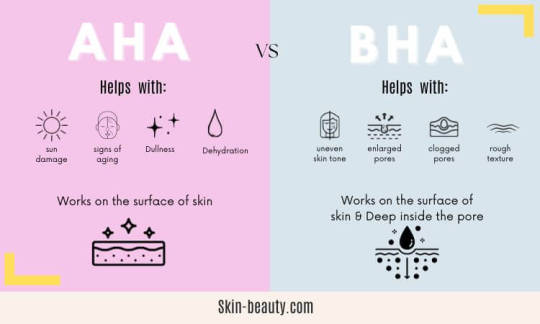
Both salicylic and glycolic acids offer unique exfoliating properties, each catering to specific skin types and concerns. Salicylic acid, a beta hydroxy acid, penetrates deep into the pores to dissolve sebum (oil) and reduce its production, effectively unclogging pores and combating acne. On the other hand, glycolic acid, an alpha hydroxy acid, provides gentle yet effective exfoliation of the skin’s surface, leaving it smooth and radiant.
Understanding the unique mechanisms of action of glycolic acid and salicylic acid and how they address different skin concerns is necessary when making a comparison. While salicylic acid is particularly suitable for oily and acne-prone skin, glycolic acid caters to a variety of skin types, offering benefits like hydration, reducing fine lines, and providing a smooth base for other skincare products.
Choosing the Right Acid for Your Skin Type
Selecting the right acid for your skin type depends on your specific needs and concerns. For those with oily, acne-prone skin, salicylic acid is the ideal choice due to its oil-dissolving and pore-penetrating properties. Glycolic acid, on the other hand, is a popular choice for various skin types thanks to its exfoliating and brightening effects, making it effective in treating concerns like uneven skin tone, texture, and signs of aging.
Bear in mind that the best acid for your skin type might vary based on your unique skin concerns and goals. With a clear understanding of each acid’s benefits and drawbacks, you are better positioned to make an informed decision and work towards achieving radiant skin.
Incorporating Salicylic and Glycolic Acids into Your Skincare Routine

Introducing salicylic and glycolic acids into your skincare routine can be quite simple with some expert guidance. Start by patch-testing the product to ensure your skin reacts well to the acid. Begin with lower concentrations and gradually increase as your skin adjusts to avoid overuse and potential irritation.
In addition to patch testing and starting with lower concentrations, here are some tips to prevent irritation when using exfoliating acids and vitamin A products:
- Alternate days between exfoliating acids and vitamin A products to support your skin’s barrier function.
- Incorporate a moisturizer with soothing ingredients like ceramides and niacinamide to restore balance to your complexion.
- Always use sun protection to shield your skin from potential sun damage.
Chemical Peels: Salicylic Acid vs Glycolic Acid
When it comes to chemical peels, both salicylic and glycolic acids offer unique benefits and cater to different skin types and concerns. Salicylic acid is the ideal choice for oily-combination skin types and acne-prone congested skin, as it penetrates deep into the pores and dissolves excess oil. Glycolic acid, on the other hand, can be effective for various skin types, addressing concerns like uneven skin tone, texture, and signs of aging.
Neutralizing a chemical peel is crucial for protecting the skin from potential damage. If you’re considering a chemical peel, professional consultation is advised to determine the most suitable option based on your unique skin type and concerns.
Tips for Maximizing Results and Minimizing Side Effects
Following these expert tips for your salicylic and glycolic acid treatments will help you maximize results and minimize side effects. First, apply the acid sparingly and evenly across the skin, avoiding overuse. Next, always use sun protection to prevent sun damage and keep your skin looking healthy and radiant.
Incorporate soothing ingredients like
aloe vera, chamomile, and cucumber to help reduce side effects and keep your skin calm and comfortable. By following these expert tips, you can enjoy the full benefits of salicylic and glycolic acids while minimizing any potential drawbacks.
Real-Life Success Stories: Salicylic and Glycolic Acid Users
The effectiveness of salicylic and glycolic acids is not only backed by science but also by real-life success stories from users who have experienced transformative results. Salicylic acid has proven effective in treating skin conditions in young adults when combined with high-dose topical keratolytic. Additionally, a topical gel containing glycolic and salicylic acids has been found safe and effective in treating facial flat warts.
These inspiring success stories showcase the power of salicylic and glycolic acid products in addressing various skin concerns, from acne to sun damage. When used correctly, these acids can help you achieve the radiant, healthy skin you’ve always desired.
Summary
In conclusion, both salicylic acid and glycolic acid offer unique benefits for various skin types and concerns. Salicylic acid, a beta hydroxy acid, is particularly effective for oily and acne-prone skin, while glycolic acid, an alpha hydroxy acid, caters to a variety of skin types and concerns, including uneven skin tone, texture, and signs of aging.
By understanding the unique properties, benefits, and drawbacks of these acids, and following expert advice on choosing the right one for your skin type and incorporating it into your skincare routine, you can achieve the radiant, healthy skin you’ve always dreamt of.
Frequently Asked Questions
Is salicylic acid better than glycolic acid?
Salicylic acid is a great option if you have oily or acne-prone skin, while glycolic acid is best for those with dry or sensitive skin. Ultimately, it depends on your individual skin type and desired results.
Can I use glycolic and salicylic acid together?
Yes, you can use glycolic and salicylic acid together as they play well together. However, it's important to start slow to assess for any sensitivity that may arise.
Is glycolic stronger than salicylic?
Overall, salicylic acid is stronger than glycolic acid as it can penetrate deeper into the pores to clean them out from within and reduce inflammation.
What is the main difference between salicylic acid and glycolic acid?
Salicylic acid is great for oily and acne-prone skin, while glycolic acid is more versatile as it can target various skin concerns including uneven tone, texture, and aging.
How often should I use salicylic and glycolic acids?
For optimal results, use salicylic and glycolic acids up to once daily. Start with once or twice a week, and gradually increase frequency to every other night for best results.
Read the full article
#niacinamide#acnetreatment#aging#AloeVera#anti-aging#benefits#ceramides#chamomile#Ingredients#Treatment#VitaminA
0 notes
Text
0 notes
Text
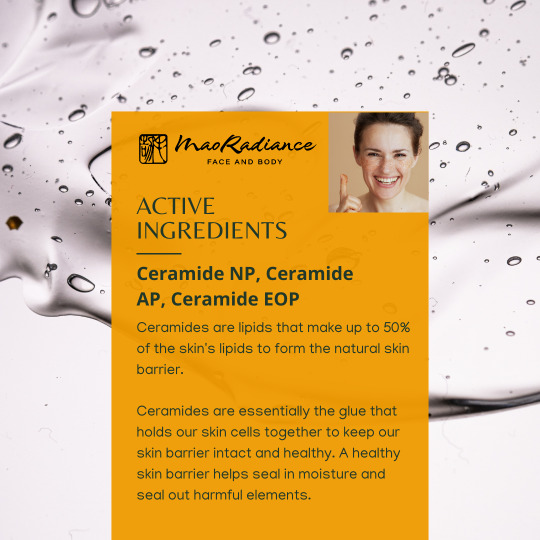

Ceramides are lipids that make up to 50% of the skin's lipids to form the natural skin barrier. 🧫🧪
Ceramides are essentially the glue that holds our skin cells together to keep our skin barrier intact and healthy. A healthy skin barrier helps seal in moisture and seal out harmful elements.
Follow us @MaoRadiance
#ceramides#CeramideNP#CeramideAP#CeramideEOP#ceramide#ceramidecare#wrinklesbegone#wrinkles#hydration#antiwrinkle#skinbooster#beauty#skincare#healthyskin#beautifulskin#glowingskin#nonirritating#nopreservatives#ParabenFree
0 notes
Text
Byroe New York Fig Renewal Oil has a soft, almost floral fragrance. It's an extremely light oil. It's easily absorbed into my skin. It leaves my skin hydrated with a healthy glow. The packaging is simple, informative, and beautiful. The bottle is adorable. I love the no spill lid.
Byroe New York Fig Renewal Oil is a combination of fig, antioxidants, superfoods, ceramides, and cica. It's Salad Infused Beauty to regenerate and revitalize my skin.
Features:
*No Parabens
*No Phthalates
*No Mineral Oil
*Product received as part of New Beauty's Free Gift Friday promotion
@byroe_official @newbeauty
#newbeauty#byroenewyork#freegiftfriday#beautypass#unboxing#justpayshipping#skincare#saladinfusedbeauty#beauty#noparabens#nophthalates#nomineraloils#fig#antioxidants#superfood#ceramides#cica#blogger#contentcreator#blastkat
0 notes
Video
Every day is a ☀️ day!
Most people know that sunscreen is important when traveling or spending time outdoors, but did you know that UV rays can also penetrate glass and windows?
Whether you're enjoying the warmer weather or spending your day indoors, help protect your skin from damaging UV rays with CeraVe AM Facial Moisturizing Lotion.
☀️ Formulated with broad-spectrum SPF 30
☀️ Non-comedogenic (won't clog pores)
☀️ Oil-free and suitable for all skin types
2 notes
·
View notes